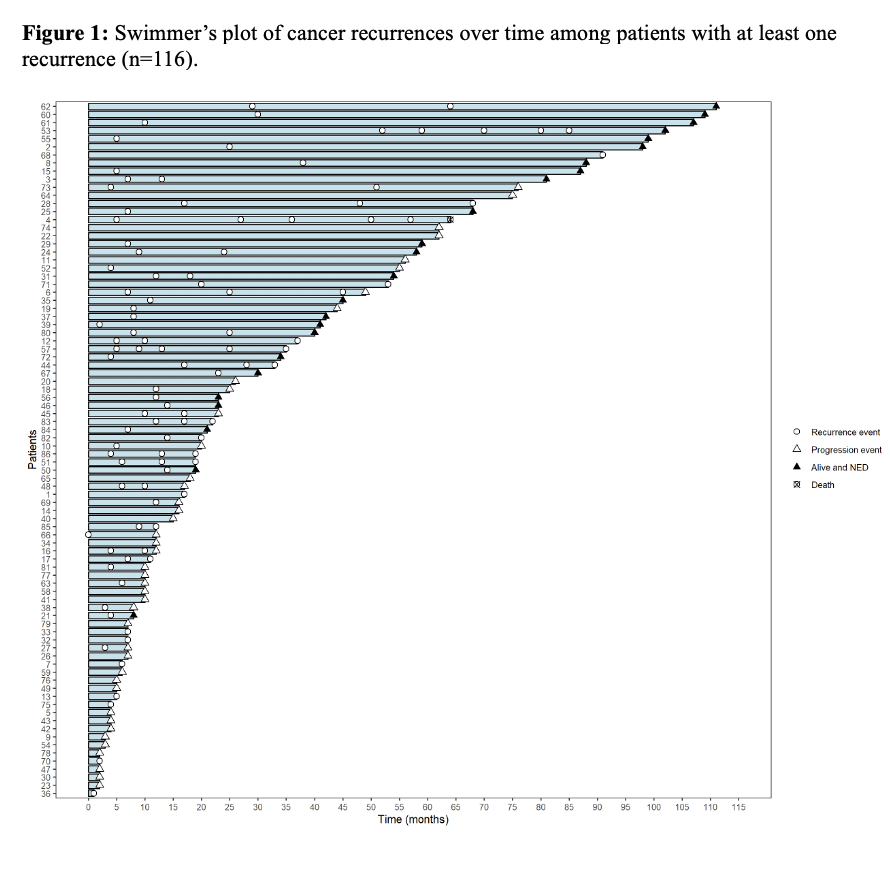Back to 2025 Abstracts
Contemporary Outcomes and Disease Burden of High-Grade T1 Bladder Cancer
Agustin Perez-Londono, MD.1, Sumedh Kaul, MS
1, Aaron Fleishman, MPH
1, Ruslan Korets, MD
1, Heidi Rayala, MD, PhD
1, Peter Chang, MD, MPH
1, Andrew Wagner, MD
1, Joaquim Bellmunt, MD, PhD
2, Aria F. Olumi, MD
1, Boris Gershman, MD
1.
1Beth Israel Deaconess Medical Center, Boston, MA, USA,
2Dana-Farber Cancer Institute, Boston, MA, USA.
BACKGROUND: High-grade T1 (HGT1) bladder cancer is considered to have recurrence and progression rates as high as 50-70% and 25-50% at 5-years, respectively. However, the disease burden of HGT1 bladder cancer remains understudied. We examined the contemporary outcomes of HGT1 bladder cancer to inform patient management, and clinical trial design.
METHODS: We identified patients aged ≥ 18 years with a new diagnosis of HGT1 urothelial carcinoma between 2010 and 2022 treated at our institution. We estimated recurrence-free (RFS), progression-free (PFS), and cancer-specific (CSS) survival using the Kaplan-Meier method. Associations of baseline characteristics with survival outcomes were evaluated using Cox regression.
RESULTS: A total of 212 patients were included, representing 346 cancer occurrences. Median age at diagnosis was 72 years, and 20% were female. The 1-, 3-, and 5-year event-free rates were 65%, 51%, and 47% for RFS 86%, 78%, and 72% for PFS. During follow-up, there was a mean of 2.21 (SD 1.28) and a median of 2 (IQR 1-3) cancer recurrences per patient. The median time to the first recurrence was 7 months (IQR 4-13.50), and the median time between contiguous recurrences was 7 months (IQR 5-14) (
Figure 1). Lager tumor size was associated with increased risks of recurrence, and receipt of adjuvant intravesical therapy was associated with reduced risks of recurrence and progression.
CONCLUSIONS: Contemporary 5-year rates of recurrence and progression among patients with HGT1 bladder cancer remain high at 53% and 28%, respectively. Larger tumor size is associated with increased risks of recurrence and progression, and adjuvant intravesical therapy is associated with lower risks. While most recurrences occur early, a subset of patients develop later recurrences emphasizing the need for long-term surveillance.

Back to 2025 Abstracts
